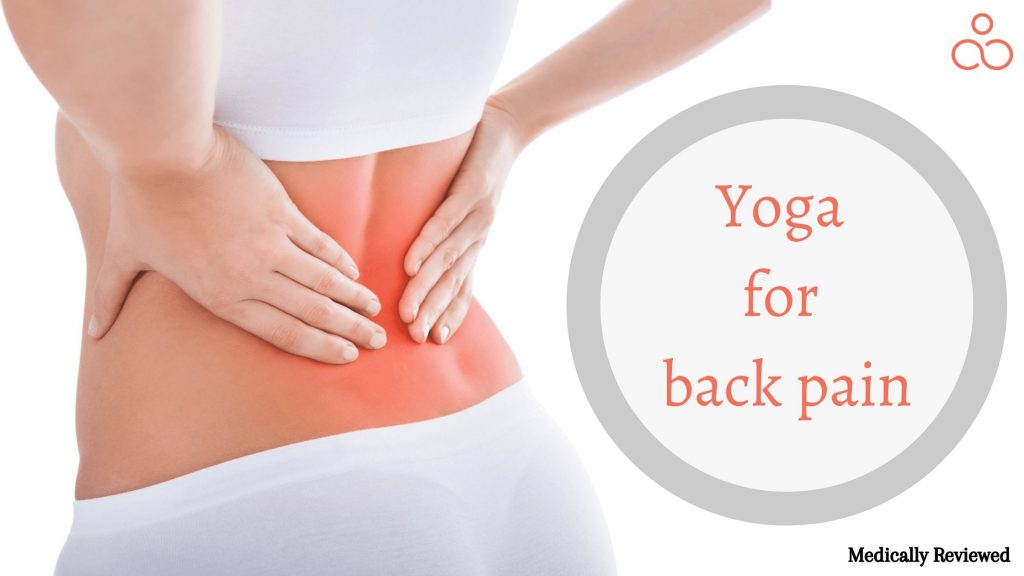Medically reviewed by Dr. Mishra
Do you have an achy back? Don’t panic! Experts say that 80% of the population will experience back pain at some point in life. Most of the time, back pain isn’t a severe health condition but can be corrected with fundamental changes and practices in life. Back pain is universal as it can affect people of all age groups. Across the world, it has been the leading cause for people to miss work or to have consistency issues in their exercise routines. We would encourage Yoga for back pain as a few minutes of practice with the right poses could keep your orthopedic visits away.
Causes of Back Pain
The Human Back comprises a complex structure of bones, muscles, ligaments, and joints. There could be multiple factors that could trigger back pain. Some of them are listed below.
- Muscle strain
- Ligament tear
- Vertebral Disk Prolapse
- Facet Degeneration
- Sports injuries
- Accidents
- Obesity
- Joint Arthritis
- Poor Posture
- Psychological Stress
- Degeneration of bones
- Osteoporosis
- Side effects for other medical conditions like kidney stones, blood clots, etc.
Yoga Beginner Poses for Pain
Yoga is helpful for back pain though it can be treated effectively through physical therapy. Yoga has proven to be equally effective in treating severe pain and limited movement though it is not covered by medical insurance. A study was conducted on 320 adults with chronic back pain. The group was divided into three groups where the first group performed Yoga every week for three months, the second one was given 15 visits with a therapist over three months, and the last one received only theoretical support through mails and books. The first and second group participants were less likely to use pain medication after three months, proving that Yoga for back pain is as effective as therapy.
The American College of Physicians (ACP) has developed a certain set of guidelines for non-invasive pharmacologic and non-pharmacologic treatments for lower back pain based on randomized, controlled trials and systematic reviews. Though sufficient supporting evidence is yet to be researched to support the effectiveness of Yoga, it was recommended that the patients should initially select nonpharmacologic (interventions that do not involve the use of medications) treatment with exercise such as Yoga.
Lower Back Pain is an occupational hazard in many professions that require physical labor and lifting or holding heavyweights. Nursing is one profession where the nurses have to do most of the work while bending over the patient bed and lifting and supporting the patients.
Study shows that Integrated Yoga has displayed a significant improvement in the physical, psychological, and social health domains better than physical exercise amongst the nursing professionals with Chronic Low Back Pain (CLBP). Another study proves Yoga to be more effective as a non-pharmacologic treatment to reduce the functional disability of CLBP.
Our Orthopedic Doctor, Mr. Mishra, has compiled a list of asanas addressing the most common types of back pain – Upper or Middle Back Pain and Lower Back Pain.
Yoga for Upper or Middle Back Pain
The upper back and the middle back are technically referred to as the thoracic spine (running from the base of the neck to the abdomen). It is designed to protect the vital internal organs and is comparatively injury resistant than the cervical and lumbar spine. Upper back pain is common with workaholics. Based on your work style and posture, you might develop an ache in your upper back. Some of the reasons and effective Yoga beginner poses for upper back pain are mentioned here. Before starting with any of these or a new exercise, please consult your doctor.
Reasons
- Muscular Irritation due to lack of strength or overuse injuries
- Joint Dysfunction such as joint capsule tearing or facet joint’s cartilage degeneration
- A herniated disk is commonly called a slipped disk or ruptured disk.
- Osteoarthritis
- Carrying a bad posture
- Excessive usage of mobile phones or other electronic gadgets
- Stiff or rounded shoulders
- Kyphosis and Scoliosis are medical conditions where the spine has or develops a deformed curvature.
- Obesity
Poses for Upper or Middle Back
- Cat-Cow Pose or Bidalasana – This pose helps remove the tension from the lower back. It follows a good flexion and extension cycle, helping you achieve a neutral spine and gain spinal mobility. Initiate the pose on all fours by aligning your shoulders and hips over the wrists and knees, respectively. Breathe in slowly and exhale around your spine with your head dropped down. On the reverse, inhale and lift your head, chest, and tailbone to arch your back up. Repeat this cycle for 1 to 3 minutes.
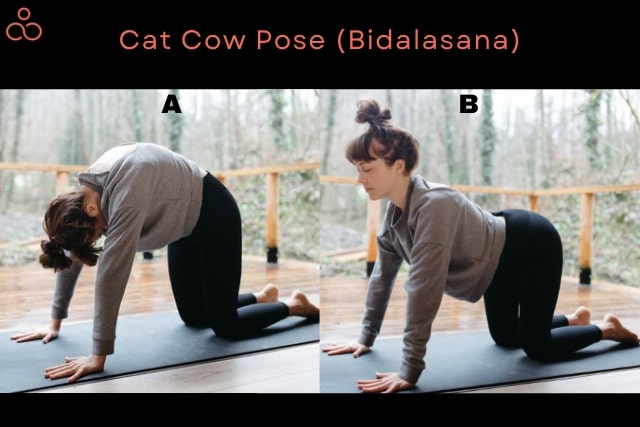
- Bow Pose or Dhanurasana – This pose strengthens the upper back and hamstrings. It also helps improve posture. It is a back-bending asana. Lie on your stomach with your feet hip wide apart. Fold your knees backward and try to hold them with your hands. Try to slightly lift your chest off the ground while inhaling while parallelly pulling your legs up towards the back. Continue to breathe and hold the pose. Don’t over-stretch. Release and relax.

- Extended Puppy Pose or Uttana Shishoasana – This pose gives a good stretch to the upper back, shoulders, spine, arms, and abdominal muscles. It calms both the mind and body. Kneel on fours with your shoulders and hips placed straight above your arms and knees. Curl your toes under and walk your hands a few inches forward to get into the right posture. Move your buttocks halfway back towards your heels, and remember not to place the elbows on the ground. Drop your forehead to the ground and create a nice long stretch in the spine through the arms. Hold the pose and release after a couple of seconds.
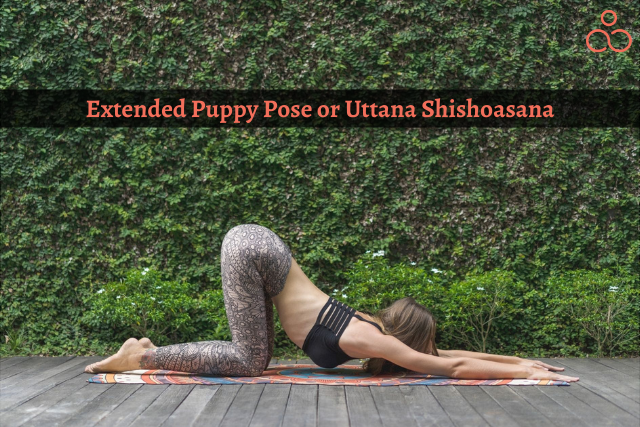
- Cobra Pose or Bhujangasana – It helps decrease the stiffness in the lower back. It strengthens the shoulders and arms while stretching the chest, shoulders, and abdomen muscles. Lie with your face down and keep your legs straight. Place your palms under the shoulders and hug your elbows to your sides. Inhale and lift your chest off the floor and ensure that your elbows stick to your side throughout the asana. Hold your neck straight.
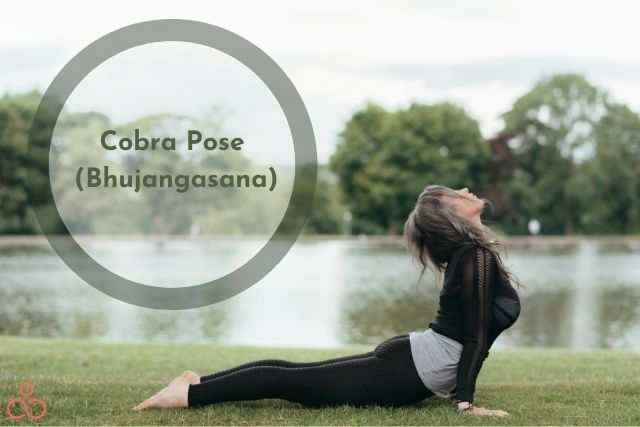
- Camel Pose or Ustrasana – This is a kneeling back bending asana that strengthens the back. It helps stretch the thorax, abdomen, and legs. It helps develop a better posture. Kneel on your legs with your back straight. Draw your hands to hold the heels and let the elbows point out. Bring your hips slightly forward and try to see if you are comfortable bending your head back. Hold this position and release by supporting your lower back with your arms.
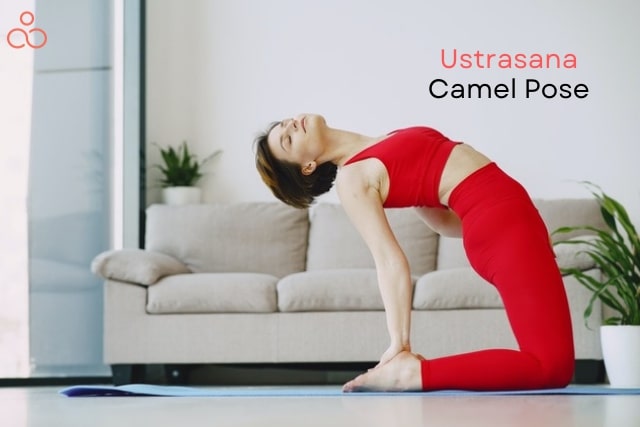
- Locust Pose or Salabhasana – This pose stretches and strengthens the back and core muscles of the body. It counteracts slouching and improves body posture. Lie on your stomach with your arms on the side of your torso. Place your palms upward and rest the forehead on the ground. Exhale and lift your head, upper torso, arms, and legs above the floor while balancing on the front pelvis, lower ribs, and belly. Slightly pad the mat with a blanket if you feel sensitive. Raise and stretch your arms backward. Gaze forward and be cautious not to crunch your neck. Release with an exhalation.

- Happy Baby pose or Ananda Balasana – It is a very natural pose that helps reduce lower back pain. It opens the inner thighs, groin, and hips. It realigns and stretches the spine. Lie flat on your back. Bend your knees towards the chest with the soles facing upward. Spread your knees and shift them towards the armpits. Hold the legs inside or outside with your hands. Rock from side to side and continue breathing.

- Reclined Pigeon Pose or Supta Kapotasana– This pose helps you to stretch the inner thighs, hips, and butt. Lie on your back and place your right foot over your left quad and bend your left knee. Hold the back of your left leg and try to pull it towards your chest gently. Hold for 1 to 3 minutes. Switch sides and repeat.
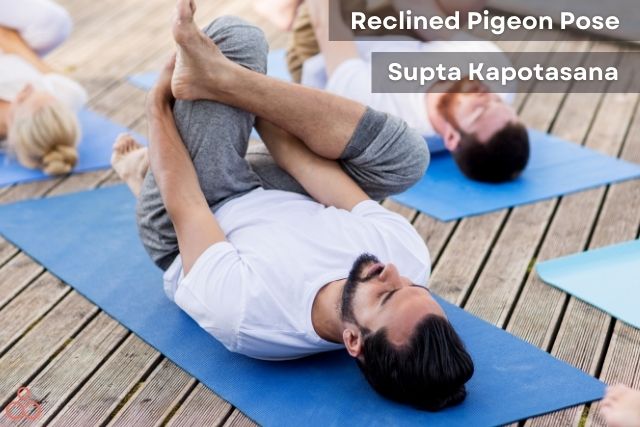
Yoga for Lower Back Pain
Lower back pain is a widespread condition for a significant share of the population. Strengthening the core is an important factor that could help reduce lower back pain. Check this section to understand some common reasons and learn a few gentle yoga poses to relieve tightness and alleviate back pain. Though experts recommend these poses, please visit your doctor before starting any new exercise.
Reasons
- Weak Core
- Lifting something heavy suddenly
- A bad posture from sitting all-day
- Scoliosis (medical conditions where the spine has or develops a deformed curvature)
Poses for Lower Back
- Cat-Cow Pose or Bidilasana – This pose helps remove the tension from the lower back. It follows a good flexion and extension cycle, helping you achieve a neutral spine and gain spinal mobility. Initiate the pose on all fours by aligning your shoulders and hips over the wrists and knees, respectively. Breathe in slowly and exhale around your spine with your head dropped down. On the reverse, inhale and lift your head, chest, and tailbone to arch your back up. Repeat this cycle for 1 to 3 minutes.
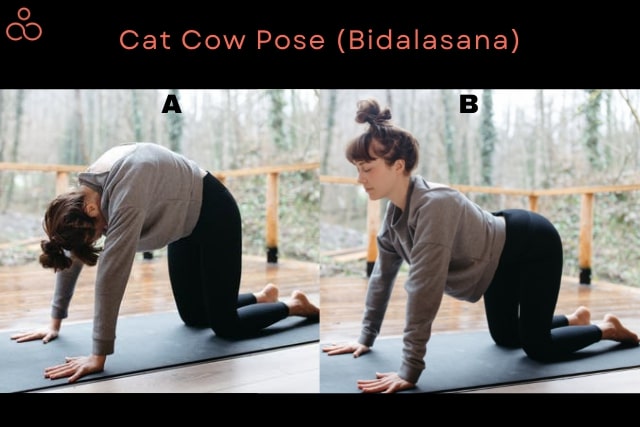
- Sphinx Pose or Salamba Bhujangasana – This pose gives a sense of relaxation to your back. It also works on the abs, which support the lower back and give a natural curve to the body. Lie on your stomach with your legs together. Place your elbows and forearms firmly on the ground and slightly lift your chest off the floor. Keep your shoulders relaxed and lengthen your spine. Remain in this pose for a minute before you relax.
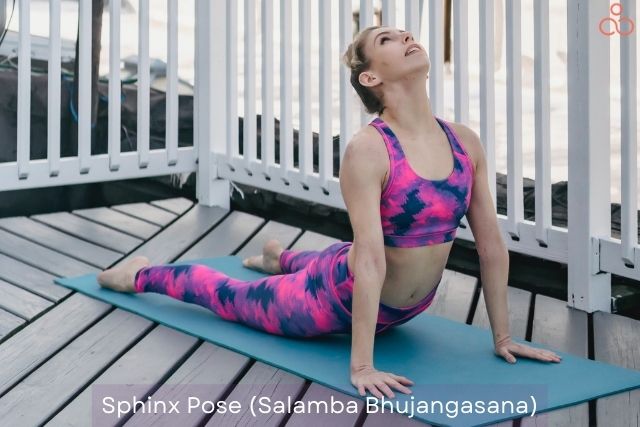
- Reclined Supine Twist or Jathara Parivartanasana – This is a great twist for your lower back though some people might not find it comfortable to start with. It helps remove the tightness and improves flexibility. Lie in the supine position and bring your knees to the chest. Twist your torso and knees in opposite directions. Try to align the chest, hip, and knees in place while in a neutral position. Practice for 1 to 3 minutes.
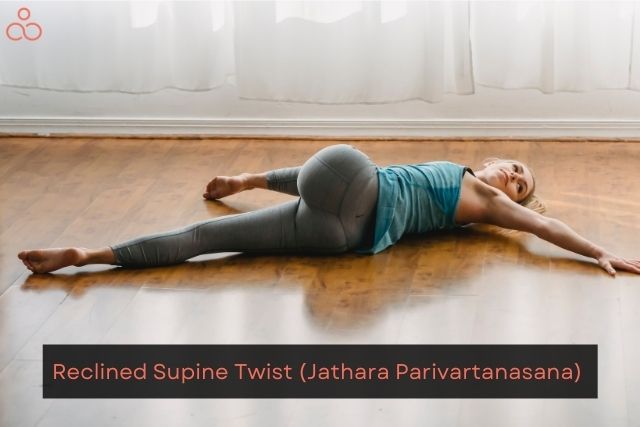
- Ragdoll Stretch or variation to Uttanasana – It stretches the ankles, calves, hamstrings, and lower back. Stand straight with your feet hip-width apart and place your arms on the side. Bend forward from the hips and feel the stretch in your calf muscles, hamstrings, and spine. Cross your elbows and rest each hand on the opposite elbow. Hold for a couple of minutes and relax.
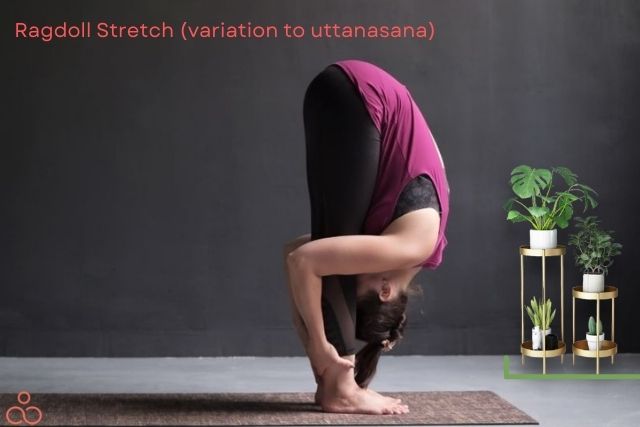
- Reclined Pigeon Pose or Supta Kapotasana – This pose helps you to stretch the inner thighs, hips, and butt. Lie on your back and place your right foot over your left quad and bend your left knee. Hold the back of your left leg and try to pull it towards your chest gently. Hold for 1 to 3 minutes. Switch sides and repeat.

- Child’s Pose or Balasana – Child’s Pose gives your back a nice stretch by elongating the spine and taking the pressure off your lower back. Kneel on the mat with your knees hip wide apart. Remember to position your feet together. Breathe in. While exhaling, bend your torso over the thighs. Rest your forehead on the ground and extend the arms in front of you. Lengthen your neck and spine and hold for 1 to 3 minutes.
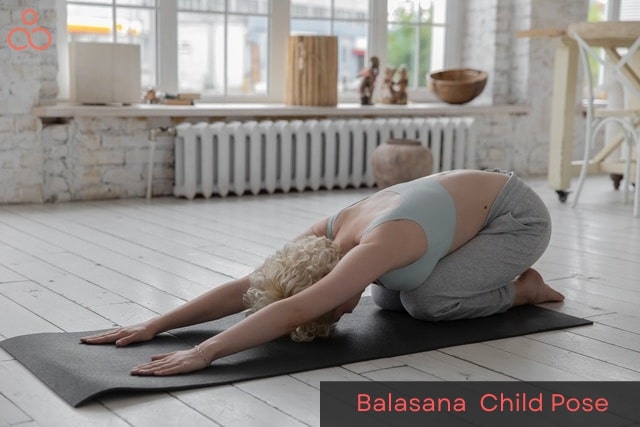
- Bridge Pose or Setu Bandha Sarvangasana – This pose helps to strengthen the back, legs, ankles, and glutes. It calms the body and helps to alleviate stress and depression. It is an inverted back bending asana. Lie in the supine position and bend your knees. Place your feet firmly on the ground hip-width apart. Place your arms alongside the torso, close enough for the fingertips to reach the heels. Lift your hips and chest up with the support of the feet and arms. Breathe and hold for a couple of breaths and relax.
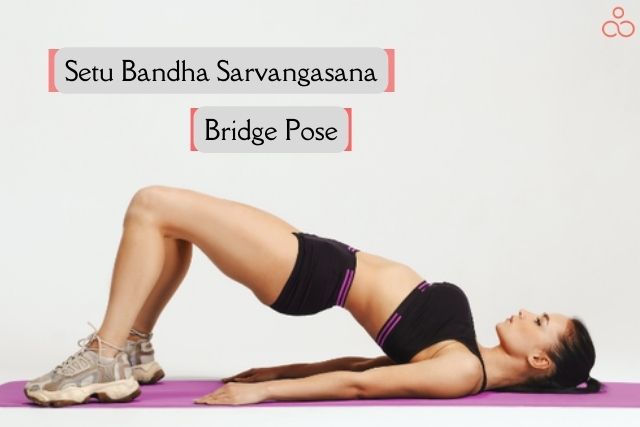
- Knee to Chest or Apanasana – This is a very basic and fun exercise. Lie on your back and bring your knees to the chest and start rocking your torso side to side. It helps massage your back using the natural weight of the body.
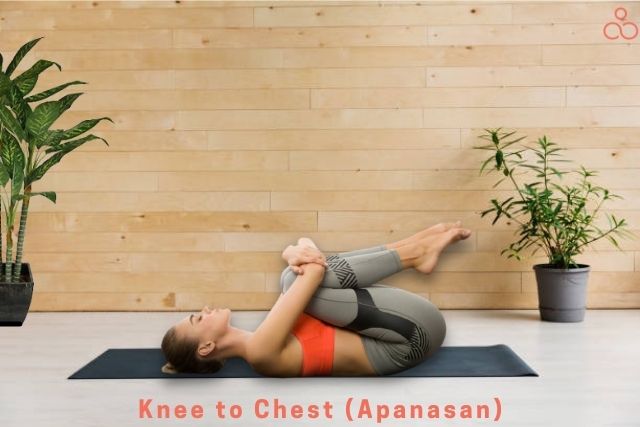
Prevention Is Better Than Cure
As the age-old saying goes, it is always better to be proactive and try our best to prevent ailment than to try and fix it while in pain. Some simple practices or lifestyle changes that could help prevent the onset of back pain are listed here. Anyone can kickstart healthy changes in lifestyle and good practices at any time.
- Enjoy your meals, choose healthily and eat consciously.
- Select a mattress with a medium firmness to maintain the proper posture for your back even while you sleep.
- Ensure your workstation is designed ergonomically right.
- Avoid smoking too much as it deprives the necessary nutrients in the spinal tissues.
- Consciously stay active throughout the day. Even while at work, take short breaks to have some physical movement in the body.
- Include some form of exercise of your choice in your daily routine to maintain healthy body weight.
- Remember to warm up and stretch before and after every workout.
Quick Tips
- There is a 60-70 percent chance that you might get a migraine because of stiffness in your shoulder. Few shoulder mobility drills to deal with shoulder stiffness are threading the needle, eagle arms, shoulder flossing, side flexion, and behind-the-back hold with the help of straps.
- Do not twist and extend simultaneously as it might compress the intervertebral joints.
- Use a Yoga belt to loop if you find it difficult to bend and reach your feet.
- Check for a modifying pose if you find the original pose uncomfortable.
- Don’t start with intermediate or advanced poses. They will come with time.
- Take support from a partner to achieve the correct posture.
- Don’t overstretch. Give your body time to do it.
- Always try to get your doctor’s green light before starting.
- Should you visit a Yoga class, inform the teacher about your limitations, if any.
Conclusion
Now that you are aware of the simple poses that could help, try to practice regularly, even for a few minutes. Ensure you discuss your plan with your doctor before beginning this new exercise regime. Build a healthy spine and enjoy life!

